2021年12月TOKYO-MOU地区PSC检查情况
数据来源于APCIS

01总体情况
1、基本检查情况
2021年12月东京备忘录地区共开展PSC检查1862艘次,发现缺陷3026项,滞留船舶31艘次,滞留率为1.66%。
2、船舶滞留情况
12月份9个国家/地区实施了滞留,印度尼西亚滞留船舶艘次最多,共滞留了7艘次,其次是澳大利亚6艘次。
滞留率最高的国家/地区依次是:澳大利亚,3.90%;俄罗斯联邦,3.25%;韩国,2.99%。
3、滞留缺陷类别分布
12月份共开出滞留缺陷71条,占据首位的是消防安全相关缺陷,排名二、三位的依次是救生设备和ISM相关缺陷。
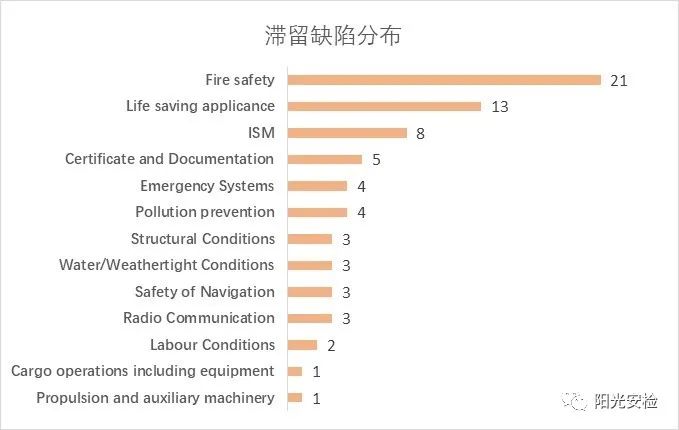
02部分典型滞留缺陷
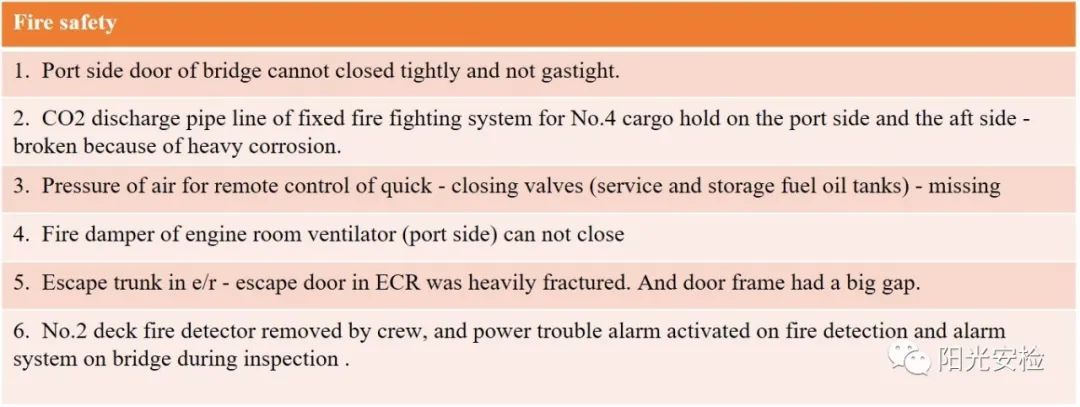

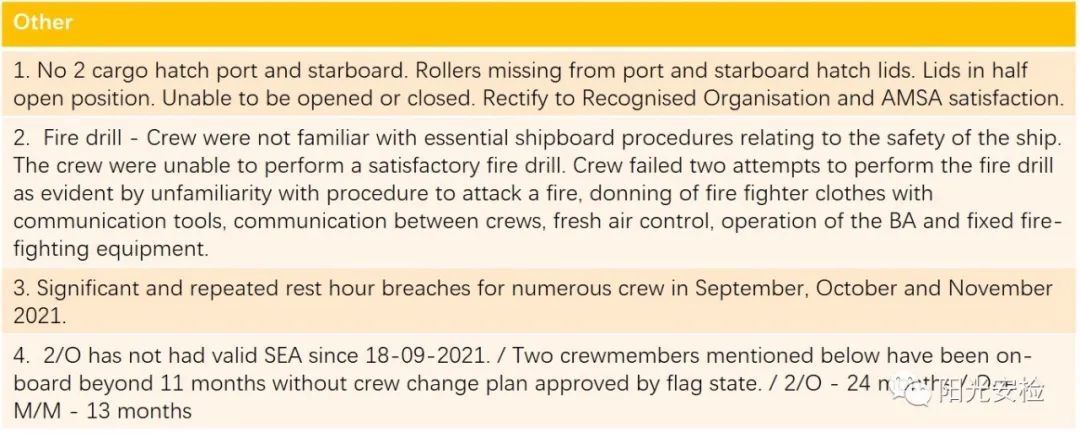
03典型滞留缺陷分析
1、未配备启动救生艇艇机的第二电瓶
缺陷描述:
No.2 BATTERY SOURCE FOR STARTING LIFE BOAT ENGINE (STB SIDE) NOT PROVIDED
未提供用于启动救生艇艇机(右舷)的第二组电瓶。
公约原文:
LSA CODE/CHAPTER IV-SURVIVAL CRAFT
4.4.6.2 The engine shall be provided with either a manual starting system, or a power starting system with two independent rechargeable energy sources. Any necessary starting aids shall also be provided. The engine starting systems and starting aids shall start the engine at an ambient temperature of -15℃ within 2 min of commencing the start procedure unless, in the opinion of the Administration having regard to the particular voyages in which the ship carrying the lifeboat is constantly engaged, a different temperature is appropriate. The starting systems shall not be impeded by the engine casing, seating or other obstructions.
4.4.6.3 The engine shall be capable of operating for not less than 5 min after starting from cold with the lifeboat out of the water.
分析:
根据《国际救生设备规则》要求,救生艇艇机要么配备手动启动系统, 要么配备两个独立的可再次补充的动力启动系统。对于“可再次补充的动力启动系统”,目前最常见的是能多次充放电的蓄电池。案例中,救生艇艇机为电瓶启动,但未提供第二组独立启动电瓶,不满足《国际救生设备规则》要求。
在PSC和FSC检查中,关于救生艇/救助艇艇机启动常见缺陷有救生(助)艇不能启动、救生艇艇机离合器故障、救生艇艇机启动电瓶未安装在水密箱子内、救生艇艇机启动电瓶为非船检机构认可产品、救生艇艇机燃油输送管接头处漏油、救生艇艇机燃油输送管及回油管使用未经认可的塑料管、救生艇艇机燃油储备不足、救生艇内未设置启动电瓶进行再充电设备、救生艇启动电瓶再充电设备故障、救生艇艇机防护罩妨碍手动启动等。
2、手提式泡沫枪装置无泡沫浓缩液
缺陷描述:
Portable application unit in E/R not ready for immediate use (foam concentrate missing).
机舱的手提式泡沫枪装置不能即刻可用(无泡沫浓缩液)
公约原文:
S74/CII-2/R ; FSSC/CHAPTER 4
1. S74/CII-2/R10.5.2.2.1
There shall be at least one portable foam applicator unit complying with the provisions of the FireSafety Systems Code (Fire extinguishing arrangements in machinery spaces).
2. S74/CII-2/R10.3.2.4
Fire extinguishers shall be situated ready for use at easily visible places, which can be reached quickly and easily at any time in the event of a fire, and in such a way that their serviceability is not impaired by the weather, vibration or other external factors. Portable fire extinguishers shall be provided with devices which indicate whether they have been used.
3. FSSC/CHAPTER 4/3.2
Portable foam applicators:A portable foam applicator unit shall consist of a foam nozzle of an inductor type capable of being connected to the fire main by a fire hose, together with a portable tank containing at least 20L of foam-making liquid and one spare tank of foam making liquid. The nozzle shall be capable of producing effective foam suitable for extinguishing an oil fire, at the rate of at least 1.5 m3/min.
分析:
按照《SOLAS公约》和《国际消防安全规则》要求,船舶机舱应至少配备一套手提式泡沫枪装置,该装置应包括一只能以消防水带连接于消防总管的感应式泡沫枪,连同一只至少能装20l发泡液的可携式容器和一只备用发泡液体容器。另外,灭火器应位于易于看到的位置并随时可用。该位置应在失火时能迅速和便于到达,且灭火器所处位置应不会使其可用性受到天气、振动或其他外部因素的影响。本例中,机舱的手提式泡沫枪装置泡沫筒内无泡沫浓缩液,不满足灭火器随时可用要求,因此被滞留。在PSC和FSC检查中,关于手提式泡沫枪装置常见缺陷还有未备用泡沫桶、备用泡沫桶内无泡沫液、泡沫枪与消防管之间转换接头不匹配等。
3、舱盖无法固定
缺陷描述:
No.1 and No.2 cargo hatches unable to be secured for upcoming voyage by hatch securing mechanisms. PSCO has reasonable grounds that all cargo hatches are unable to be secured effectively.
1号和2号货舱盖无法通过舱口固定装置进行固定。PSCO有合理的理由认为所有货舱口无法有效固定。
公约原文:
Load Lines, LL66/ANI
R16 Hatchways closed by weathertight covers of steel or other equivalent materials
All hatchways in position 1 and 2 shall be fitted with hatch covers of steel or other equivalent material. Except as provided in regulation 14(2), such covers shall be weathertight and fitted with gaskets and clamping devices. The means for securing and maintaining weathertightness shall be to the satisfaction of the Administration. The arrangements shall ensure that the tightness can be maintained in any sea conditions, and for this purpose tests for tightness shall be required at the initial survey, and may be required at renewal and annual surveys or at more frequent intervals.
分析:
载重线公约要求,除了采用活动舱盖关闭以及用舱盖布和封舱压条来保证风雨密的舱口盖以外,位置1和位置2上的所有舱口应设有钢质或其他相当材料的舱口盖。除另有规定外,舱口盖应为风雨密,并应设有衬垫和夹扣装置。本例中,PSCO在检查时查出1号和2号货舱盖锁紧装置无法有效固定,由此推断所有货舱口无法锁紧固定,船舶被滞留。安检中货舱口/货舱盖常见缺陷还有:货舱舱盖变形、穿孔、锈蚀超限,达不到风雨密要求;舱口盖橡胶衬垫严重老化、损坏,不能满足舱盖的风雨密要求;XX个固定舱盖的夹扣装置变形、损坏或锈蚀超限;楔子、楔耳、封舱压条等缺失、损坏;在未到港之前拆除舱口盖固定锁紧装置,等等。
03部分缺陷列举
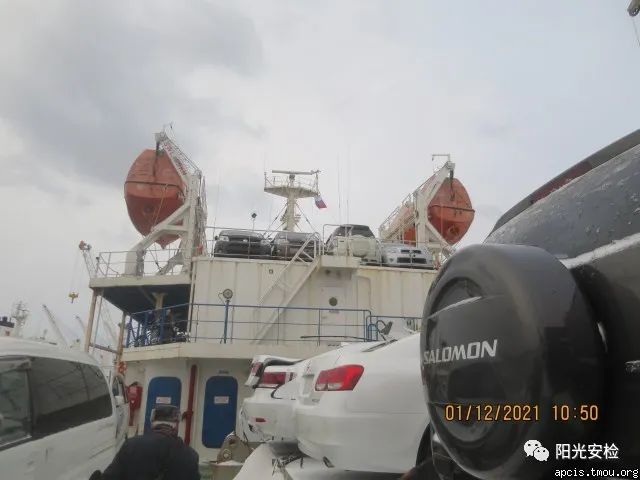
1. Access to life saiving appliances and the place where the crew is assembled are blocked by vehicles due to violation the cargo securing manual

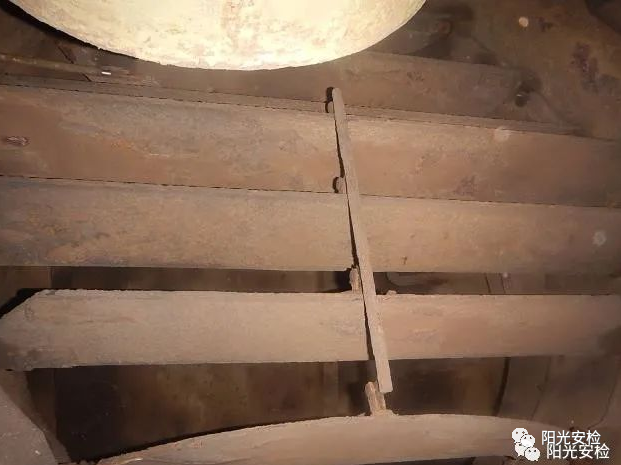
2. Engine room ventilation fan No. 3 fire damper defective
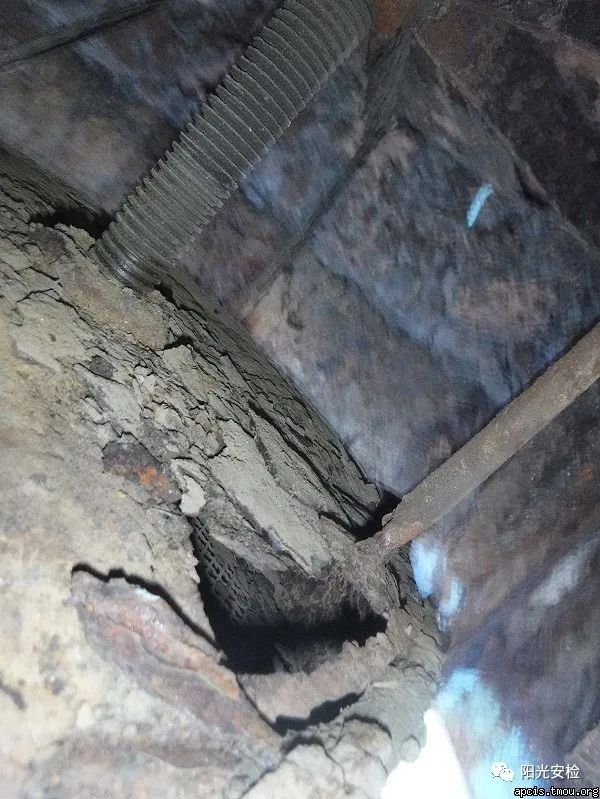
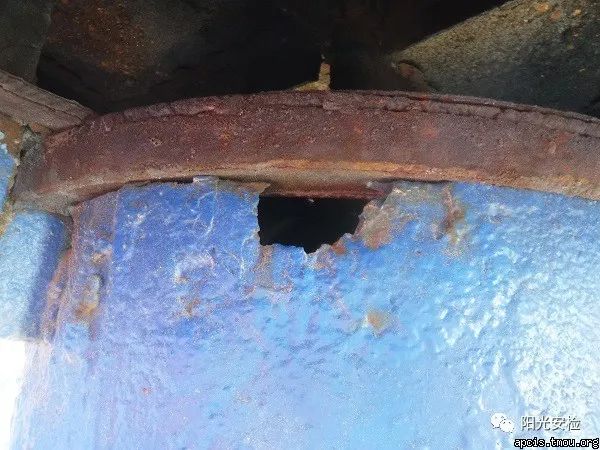
3. Ventilator closures for C/H located on upper deck (fore 1pc and aft 3pcs) - unable to close due to defective flap and coaming plate, made large holes due to heavy corrosion (1) on flap - fore 1pc and aft 2pcs (2) on coaming top - aft 1pc
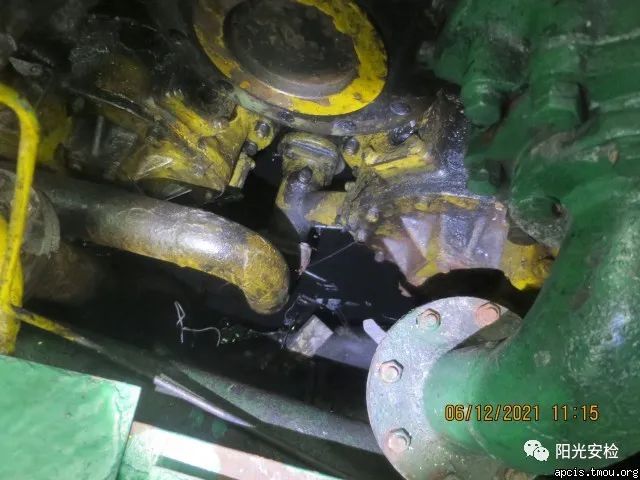

4. Desk under M/E and Reduction Gear - oily
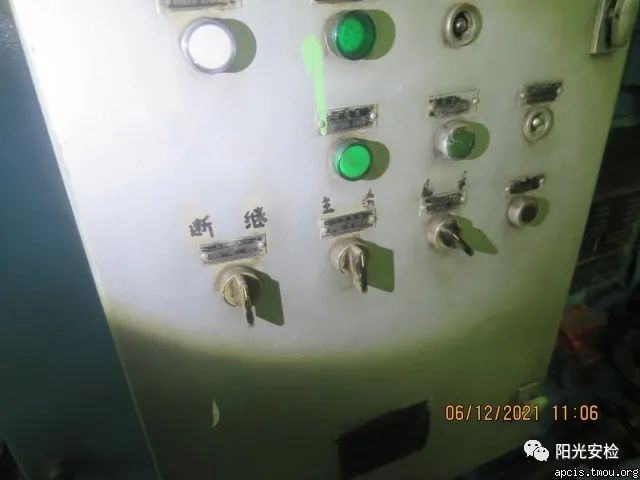
5. Sewage Treatment Unit - air blower compressors - Switch off
11-26 来源:验船师袁晓东 船之友
12-31 来源:阳光安检
10-20 来源: 蓝盾安检创新工作室
02-23 来源:洋山港海事局
01-30 来源:信德海事网
01-22 来源:信德海事网
03-28 来源:张家港海事局船舶交通管理中心
08-01 来源:蓝盾安检
01-06 来源:中山海事
09-24 来源: 蓝盾安检创新工作室